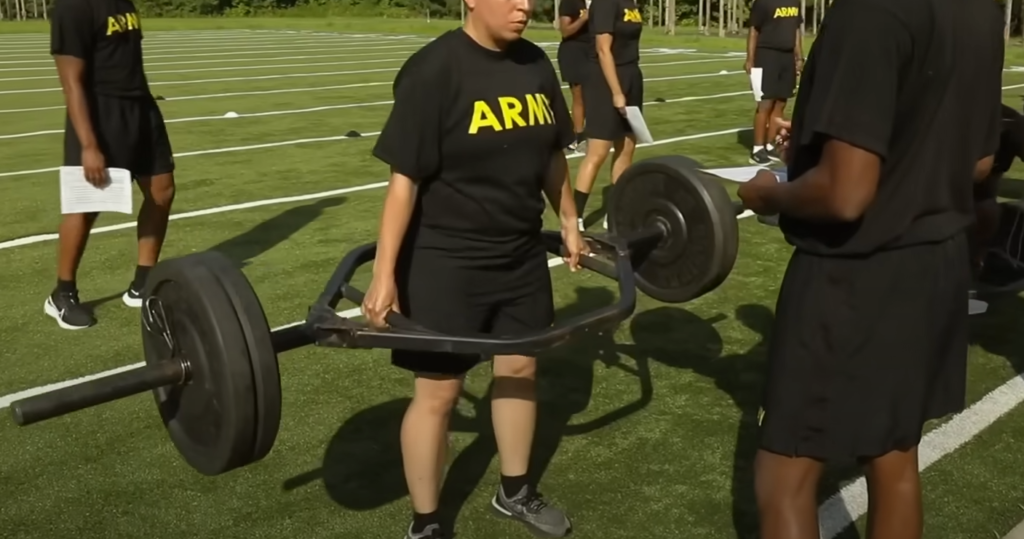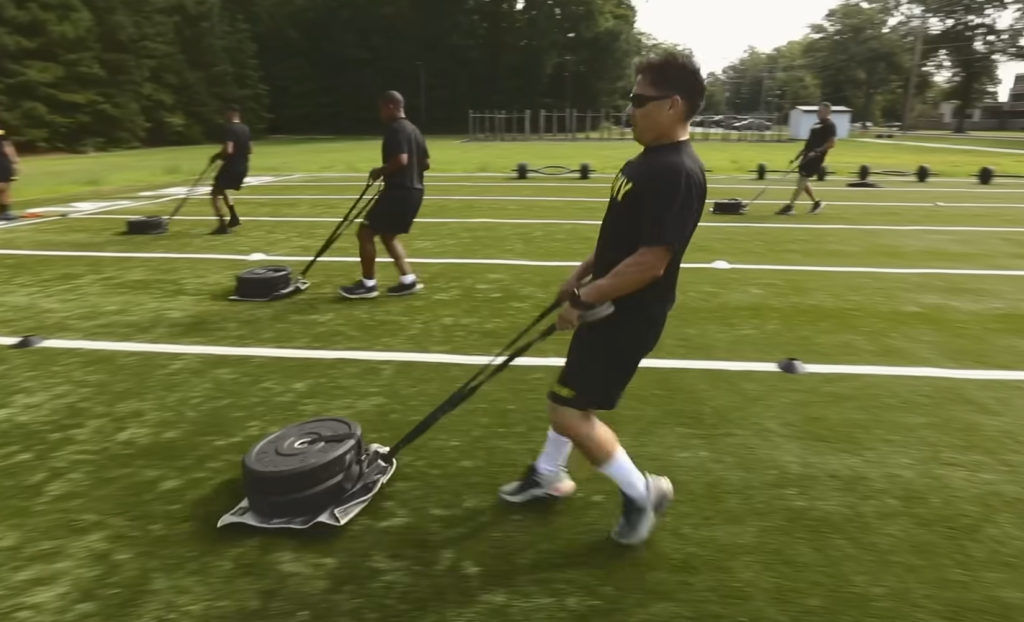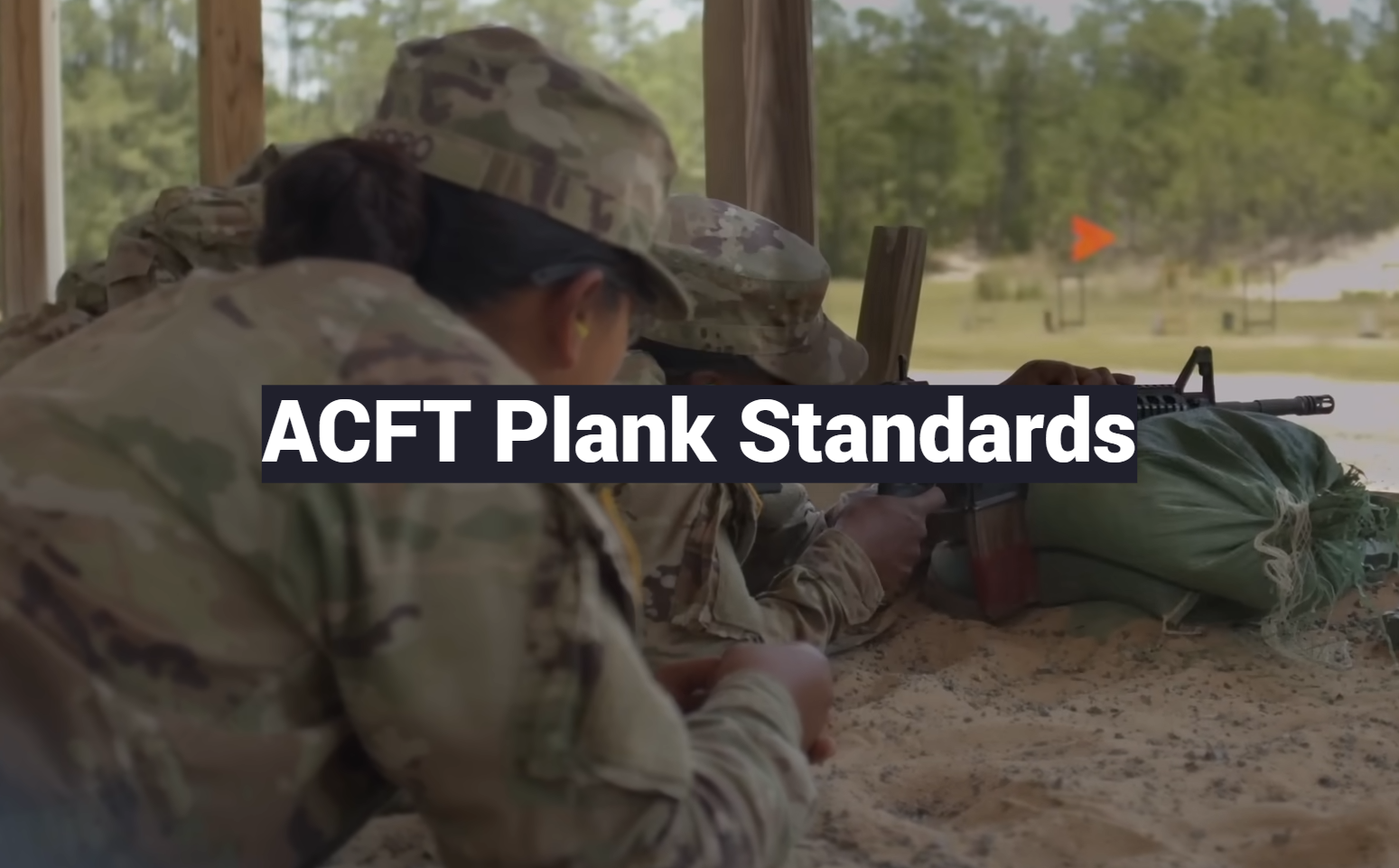The Army Combat Fitness Test (ACFT) represents a comprehensive measure of a soldier’s physical readiness, and among its challenging components is the plank event, designed to assess core strength and endurance. The ACFT plank standards are meticulously crafted to ensure they accurately reflect the demands and rigors expected of military personnel in the field. These standards not only gauge a soldier’s ability to maintain a plank position under timed conditions but also serve as a crucial indicator of their overall functional fitness.
As the ACFT evolves, understanding and meeting these plank standards is essential for every soldier aiming to achieve operational excellence and readiness. This article delves into the specifics of the ACFT plank standards, offering insights into the requirements, scoring system, and strategies for preparation and improvement, tailored to assist soldiers in surpassing the challenges posed by this critical component of the fitness test.
ACFT Plank Standards (2024):
[tds_note]In 2024, physical fitness remains a cornerstone of military readiness. One key component of the Army Combat Fitness Test (ACFT) that has been gaining attention is the plank – a simple yet highly effective exercise. The plank tests core strength and stability, two fundamental aspects of physical fitness [1].[/tds_note]

Male Plank Standards
The plank, a seemingly straightforward exercise, can be incredibly challenging when performed correctly. It requires the engagement of multiple muscle groups simultaneously and provides a comprehensive measure of an individual’s core strength. For men in the army, meeting the plank standards is not just about passing a test; it’s about proving their readiness for the physical demands of service.
In 2024, the male plank standards require soldiers to maintain a proper plank position for a minimum of 1 minute and 40 seconds. This time, although it may seem short, can feel like an eternity when every muscle in your body is straining to maintain the position [2].
It’s important to note that the plank must be executed with perfect form. The body should form a straight line from the shoulders to the ankles, and the elbows should be directly underneath the shoulders. Any deviation from this form can result in a penalty, emphasizing the importance of not just strength, but also technique and discipline.
Female Plank Standards
For female soldiers, the ACFT plank standards are equally demanding. The physical strength required to meet these standards is a testament to the vital role that women play in our armed forces.
The standard for women is to hold the plank for at least 1 minute and 20 seconds. Just like their male counterparts, female soldiers must maintain impeccable form throughout the duration of the exercise.
The plank is a great equalizer. It doesn’t matter if you’re a man or a woman, a veteran or a rookie – the plank is challenging for everyone. It tests not just your physical strength, but also your mental fortitude. It requires focus, determination, and resilience – qualities that are essential for every soldier [3].
To meet these standards, it’s crucial to train consistently. Incorporating planks into your regular workout routine can help build the core strength needed to excel in this exercise. But remember, it’s not just about strength – technique is equally important. So take the time to master the correct form, and practice maintaining it for increasing lengths of time.
Plank Instructions And Requirements:
Purpose
The primary purpose of the plank is to strengthen the core muscles, which include the abdominals, back, and pelvis. A strong core enhances stability, posture, and overall athletic performance. It also reduces the risk of injuries by supporting the spine. Beyond its physical benefits, the plank also challenges mental toughness, as holding the position requires focus and endurance.

Equipment
One of the advantages of planking is its minimal equipment requirement. Essentially, all you need is a flat surface. However, for comfort, you may use a yoga mat or a similar cushioned surface. This is particularly helpful when performing the exercise on hard floors to prevent discomfort in your forearms and toes.
Gloves or No Gloves: What’s Best for You?
The decision to wear gloves while planking is personal and depends on your comfort and grip preference. Gloves can offer extra padding, reduce pressure on your hands, and prevent slipping, especially if you sweat a lot or are planking on a smooth surface. However, some may find that gloves hinder their natural grip and prefer the direct contact of their hands with the surface. Experiment with both options to determine what works best for you [4].
Proper Attire: What to Wear
Comfort and mobility are key when choosing what to wear for planking. Opt for breathable, flexible clothing that doesn’t restrict your movement. Fitted attire is generally better than loose clothing, which can get in the way or catch on surfaces as you move. Good quality, supportive footwear can provide stability and support, although many people prefer to plank barefoot for better grip and proprioception.
Pre-Test
Before diving into the plank, it’s wise to assess your current core strength to determine an appropriate starting point. A simple pre-test is the basic front plank: see how long you can maintain the position with proper form. Start with your forearms on the ground, elbows directly below your shoulders, legs extended, and toes tucked under. Your body should form a straight line from head to heels. If you can hold this position for 30 seconds or more, you’re ready to progress. If not, consider starting with modified planks on your knees.
Procedure
- Starting Position: Begin in a prone position on the floor. Place your forearms on the ground with elbows aligned below the shoulders and arms parallel to each other about shoulder-width apart. Curl your toes under and engage your glutes and core;
- Lift Your Body: Elevate your body off the ground by pushing through your forearms and toes. Keep your torso straight and rigid, and your body in a straight line from ears to toes with no sagging or bending;
- Hold the Position: Maintain this position, focusing on keeping your core engaged and your breathing steady. Avoid holding your breath. For beginners, start by holding the plank for 20 to 30 seconds. As you build strength, aim to extend the duration;
- Proper Form Check: Ensure your head is in line with your back, and your gaze is down to avoid neck strain. Keep your shoulders away from your ears to prevent shoulder injury. Distribute your weight evenly across your forearms and toes;
- Modifications and Variations: To increase the difficulty, try variations such as the side plank, reverse plank, or plank with leg lifts. If the standard plank is too challenging, modify it by lowering your knees to the ground;
- Cool Down: After completing your plank session, perform a gentle stretch for your core, back, and shoulders to prevent stiffness and aid in recovery;

How Do You Train For ACFT Plank Event:
Understanding the ACFT Plank Event
Before diving into the training specifics, it’s essential to understand what the ACFT plank event entails. This event requires participants to maintain a plank position for as long as possible, up to a maximum time limit. The goal is to test the core’s muscular endurance, reflecting a soldier’s ability to carry equipment, perform rigorous activities, and maintain overall operational readiness. The minimum standards vary depending on age and gender, emphasizing the importance of a tailored training program.
Building a Solid Foundation
- Start with the Basics: If you’re new to planking or core training in general, begin with the basics. Focus on mastering the form of a standard plank before progressing to more challenging variations. Proper form involves maintaining a straight line from your head to your heels, with your elbows under your shoulders and your core engaged [5];
- Incorporate Core Strengthening Exercises: In addition to regular planks, incorporate a variety of core-strengthening exercises into your routine. Exercises such as Russian twists, bird dogs, dead bugs, and leg raises will help build a stronger, more resilient core, which is crucial for a prolonged plank hold;
Progressive Overload
- Increase Duration Gradually: Start by holding a plank for as long as you can maintain proper form. Gradually increase the duration of your plank holds over time. For example, if you start with 30-second holds, aim to add 5 to 10 seconds more each week;
- Add Variations: Introduce variations to your plank routine to challenge your muscles differently and prevent plateaus. Side planks, reverse planks, and planks with leg lifts can enhance your core strength and stability, contributing to better performance in the plank event;
Volume and Frequency
- Consistent Practice: Consistency is key to improving your plank time. Aim to incorporate plank exercises into your routine at least 3-4 times per week. This frequent, targeted practice will help build endurance in the muscles required for the plank event;
- Volume Matters: While the quality of the exercise is paramount, gradually increasing the volume of your training — how many sets and reps (or in this case, duration) you do — will also play a significant role in improving your endurance;
Recovery and Nutrition
- Adequate Rest: Recovery is as important as the training itself. Ensure you’re giving your body enough rest between core workouts to allow muscles to repair and strengthen. Incorporating rest days into your training schedule prevents overtraining and injuries;
- Nutrition: Proper nutrition supports muscle recovery and growth. Focus on a balanced diet rich in proteins, healthy fats, and carbohydrates to fuel your workouts and recovery. Hydration is also crucial, especially before and after your training sessions;
Mental Fortitude
- Mental Training: The plank event is as much a mental challenge as it is a physical one. Incorporating mental fortitude training, such as visualization techniques and positive affirmations, can help you push through discomfort and maintain form for longer periods;
- Breathing Techniques: Practicing controlled breathing can help manage discomfort during prolonged plank holds. Focus on taking deep, controlled breaths to maintain composure and stability throughout the event;

Simulation and Practice
- ACFT Conditions: Simulate the conditions of the ACFT as closely as possible in your training. This includes practicing on similar surfaces, wearing your uniform, and timing your planks as they would be during the test;
- Mock Tests: Periodically, perform mock ACFT plank events to gauge your progress and adjust your training as necessary. This not only helps you understand where you stand but also familiarizes you with the test’s pressure;
Final Tips and Strategies
- Warm-Up Properly: Before attempting your plank holds, ensure you’re adequately warmed up. A good warm-up activates your core and prepares your body for the exercise, reducing the risk of injury;
- Posture and Form Check: Regularly check your form during practice. Poor form not only risks injury but also makes your plank less effective. Consider recording yourself or working with a coach to ensure your technique is correct;
- Peer Support: Training with a partner or group can provide motivation and support. It can also introduce a healthy competitive element, pushing you to improve;
Training for the ACFT plank event is a comprehensive process that involves more than just practicing the plank itself. It requires a holistic approach, including strength training, endurance building, proper nutrition, recovery, and mental preparation.
Workouts to Improve Your Plank Event:
1) 3-Point Planks
Objective: Enhance balance and core stability by reducing points of contact.
How to Perform:
- Start in a standard plank position with your forearms on the ground, elbows under shoulders, and legs extended;
- Lift one foot off the ground, keeping your leg straight. This reduces your points of contact to three;
- Hold this position for a specified duration before switching to lift the other foot;
- Focus on maintaining a straight line from head to heels, avoiding any hip sagging or raising [6];
Benefits: This variation increases the challenge to your core by requiring it to work harder to stabilize your body with one less point of support. It also engages the glutes and lower back.
2) Front Plank with Pull-Thru
Objective: Integrate dynamic movement to engage more core muscles and increase endurance.
How to Perform:
- Begin in a high plank position with your hands under your shoulders and feet apart for stability.
- Place a small weight or kettlebell just outside one hand;
- Reach under your torso with the opposite hand to grab the weight, dragging it to the other side;
- Place the weight down and return to the high plank position. Repeat the movement with the other hand;
- Ensure your hips and shoulders stay square to the ground throughout the movement to maximize core engagement;
Benefits: This exercise not only strengthens the core but also incorporates elements of coordination and dynamic movement, challenging stability and enhancing muscular endurance.
3) 2-Point Planks
Objective: Further challenge your balance and core stability by reducing points of contact to two.
How to Perform:
- Start in a standard plank position;
- Simultaneously lift and extend one arm in front of you and the opposite leg behind you;
- Keep your body as straight and stable as possible, avoiding any rotation or sagging;
- Hold this position for a few seconds before returning to the starting position and repeating on the opposite side;
Benefits: The 2-point plank significantly tests your balance and core strength by minimizing stability points. This variation is excellent for engaging the deep core muscles and improving overall body control.

4) Weighted Planks
Objective: Increase the intensity of the plank hold by adding external resistance.
How to Perform:
- Assume a standard forearm plank position;
- Have a partner carefully place a weight plate on your upper back, ensuring it’s positioned safely and comfortably;
- Hold the plank position for a specified time, focusing on keeping your core engaged and your body in a straight line;
- To increase difficulty, gradually increase the weight or the duration of the hold;
Benefits: Adding weight to your plank challenges your muscles to adapt to a higher load, promoting strength gains and endurance. This variation is particularly effective for advancing your plank performance once you’ve mastered the bodyweight version.
Incorporating These Workouts
[tds_council]To effectively improve your plank event performance, incorporate these variations into your core workout routine 2-3 times per week. Start with shorter durations and lighter weights, gradually increasing as your strength and endurance improve. Always prioritize form to prevent injury and ensure the exercises are as effective as possible.[/tds_council]
In addition to these exercises, remember the importance of a holistic approach to fitness, including proper nutrition, hydration, and recovery strategies. With dedication and consistency, these workouts will significantly enhance your plank event performance, contributing to your overall physical readiness and success in the ACFT.
What are the Benefits of This Exercise For A Recruit/Soldier?
The plank exercise, particularly within the context of a recruit or soldier’s physical training regimen for the Army Combat Fitness Test (ACFT), offers a multitude of benefits that are crucial for military readiness and performance. These benefits span physical, mental, and tactical dimensions, underscoring the importance of core strength and endurance in a military setting.
Physical Benefits
- Core Strength and Stability: The plank primarily targets the core muscles, including the abdominals, obliques, and lower back. Enhanced core strength contributes to improved stability and balance, which are essential for carrying heavy equipment, navigating uneven terrain, and performing combat maneuvers;
- Reduced Risk of Injury: A strong core acts as a stabilizer for the entire body, reducing the risk of injuries, particularly lower back injuries. This is vital for soldiers, who often engage in activities that can strain the back, such as lifting, carrying, and sudden movements during combat situations;
- Improved Posture: Regularly performing planks helps improve posture by strengthening the muscles responsible for maintaining upright and neutral spine positions. Good posture is critical for soldiers to maintain effectiveness and endurance during long patrols or while carrying heavy gear;
- Enhanced Physical Performance: A strong core facilitates the transfer of power between the upper and lower body, enhancing overall physical performance. This is crucial for soldiers in tasks ranging from sprinting and climbing to hand-to-hand combat, where efficient power transfer can make a significant difference [7];
Mental Benefits
- Mental Toughness and Endurance: The plank is as much a test of mental strength as it is of physical capability. Holding a plank for extended periods requires focus, determination, and the ability to push through discomfort. These are valuable traits for soldiers facing the challenges of military life and operations;
- Concentration and Focus: The discipline required to maintain proper plank form and focus on breathing helps improve concentration and mental focus. These skills are beneficial on the battlefield, where attention to detail and the ability to remain focused under pressure are paramount;
Tactical Benefits
- Operational Readiness: The core strength and endurance developed through plank exercises contribute to a soldier’s overall operational readiness. Soldiers are better prepared to perform a wide range of military tasks, from engaging in direct combat to executing strategic maneuvers that require physical exertion over extended periods;
- Versatility and Adaptability: The simplicity of the plank exercise means it can be performed almost anywhere, without the need for special equipment. This adaptability makes it an ideal exercise for soldiers, who may be stationed in diverse environments and need to maintain their physical conditioning without access to a fully equipped gym;
- Team Cohesion and Morale: Group training sessions that include exercises like planks can foster team cohesion and morale. The shared experience of pushing through challenging workouts can build camaraderie and a sense of collective achievement among soldiers;

Mistakes to Avoid:
Improving your performance in the plank event, especially for military fitness tests like the Army Combat Fitness Test (ACFT), requires not only dedicated practice but also an awareness of common mistakes that can hinder your progress. Avoiding these errors can help maximize the effectiveness of your training, reduce the risk of injury, and improve your overall performance.
Here are key mistakes to avoid during your plank training:
1. Poor Form
- Sagging Hips: Allowing your hips to sag puts unnecessary pressure on your lower back, reducing the effectiveness of the exercise on your core and increasing the risk of injury;
- Piking Hips: Lifting your hips too high turns the plank into more of a downward dog yoga position, which fails to engage the core muscles properly;
- Dropping the Head: This can strain your neck. Ensure your neck is in a neutral position, aligned with your spine [8];
2. Holding Your Breath
Forgetting to breathe steadily and deeply during the plank can lead to unnecessary tension and fatigue in the muscles. Proper breathing helps to oxygenate the muscles and maintain focus and endurance.
3. Overextending the Duration
While it might seem beneficial to hold the plank for as long as possible, excessively long holds can lead to form breakdown and increase the risk of injury. Quality over quantity is critical; it’s more effective to hold a plank with proper form for a shorter time than to push for longer durations with poor form.
4. Neglecting Core Engagement
Failing to actively engage your core throughout the exercise can diminish the plank’s effectiveness. Ensure you’re consciously tightening your abdominal muscles, along with your glutes and leg muscles, to maintain a stable and straight body line.
5. Not Varying Your Routine
Repeating the same plank variation without incorporating other forms or core exercises can lead to a plateau in strength and endurance gains. Incorporate variations like side planks, reverse planks, and dynamic plank movements to challenge your muscles in different ways and continue making progress.
6. Ignoring the Rest of Your Body
While the plank is a core exercise, it’s also important to engage your legs, glutes, and shoulders actively. This full-body tension creates a more stable and effective plank position.
7. Rushing Into Advanced Variations
Progressing to more challenging plank variations before mastering the basics can lead to form errors and decrease the exercise’s effectiveness. Ensure you have a strong foundation in the standard plank before moving on to advanced variations.
8. Setting Unrealistic Expectations
Expecting rapid improvements without consistent and dedicated practice can lead to frustration and demotivation. Understand that progress in core strength and endurance takes time and patience.
9. Lack of Consistency
Sporadic training will not yield the desired improvements in your plank performance. Consistency is key to building endurance and strength over time.
10. Neglecting Recovery
Recovery is an essential part of any training regimen. Overworking your core without allowing sufficient time for muscle repair and growth can lead to fatigue, decreased performance, and injury.

Trouble Spots On the Plank Event
The plank event, especially in contexts like the Army Combat Fitness Test (ACFT), can expose several trouble spots for participants. Identifying and addressing these areas is crucial for improving performance and ensuring overall physical readiness [9].
Here are common trouble spots associated with the plank event and strategies to overcome them:
Core Weakness
- Issue: A weak core can make it difficult to maintain the proper plank form for the required duration, leading to sagging hips or an arched back;
- Solution: Strengthen your core through targeted exercises such as Russian twists, bicycle crunches, and leg raises. Incorporate exercises that work both the superficial and deep core muscles for a well-rounded strength;
Shoulder Fatigue
- Issue: Holding a plank position puts a significant amount of stress on the shoulders, which can lead to fatigue and form breakdown over time;
- Solution: Strengthen shoulder muscles with exercises like push-ups, shoulder presses, and lateral raises. Also, focus on exercises that improve shoulder stability and mobility;
Lower Back Pain
- Issue: Incorrect plank form or pre-existing issues can lead to lower back pain during the exercise. Sagging hips are a common cause, putting unnecessary strain on the lower back;
- Solution: Ensure proper form by engaging your core, glutes, and leg muscles to keep your body in a straight line. Strengthening the lower back through exercises like “Superman” and “bridges” can also help. If back pain persists, consult a healthcare professional to rule out underlying issues;
Lack of Endurance
- Issue: Failing to maintain the plank position for the desired time due to lack of muscular endurance;
- Solution: Gradually increase your plank hold time to build endurance. Start with shorter intervals and gradually add time as your endurance improves. Incorporating interval training with other high-intensity exercises can also boost overall endurance;
Grip and Wrist Discomfort
- Issue: Maintaining weight on your forearms or hands during the plank can lead to discomfort or pain in the wrists and forearms;
- Solution: Strengthen the wrists and improve flexibility with wrist curls and extensions. Use a padded surface or wrist wraps for support. Practicing planks on your forearms or using push-up grips can alleviate wrist pressure;

Mental Fatigue
- Issue: Losing focus or motivation to maintain the plank due to the mental challenge of the exercise;
- Solution: Practice mental toughness techniques such as visualization, focused breathing, and setting small, achievable goals during the plank to keep your mind engaged. Training with a partner or group can also provide motivation and support;
Improper Breathing
- Issue: Holding your breath or breathing irregularly can lead to quicker fatigue and less effective core engagement;
- Solution: Focus on maintaining a steady and controlled breathing pattern throughout the plank. Practice diaphragmatic breathing to ensure deep, efficient breaths that help maintain focus and endurance;
Neglecting Other Core Exercises
- Issue: Solely focusing on the plank without incorporating a variety of core exercises can lead to imbalances and plateauing in progress;
- Solution: Include a range of core exercises in your routine to target different muscle groups and improve overall core strength and stability. This variety can also prevent boredom and maintain motivation;
Overtraining
- Issue: Excessive training without adequate rest and recovery can lead to fatigue, decreased performance, and increased risk of injury;
- Solution: Ensure a balanced training plan that includes rest days and recovery techniques such as stretching, foam rolling, and proper nutrition. Listen to your body and adjust your training intensity and volume as needed;
By addressing these trouble spots with targeted strategies, participants can improve their plank performance, enhance overall fitness, and better meet the demands of the ACFT or any physical fitness test. Remember, consistency, proper form, and a balanced approach to training and recovery are key to overcoming challenges and achieving success.
Tips For Passing Your ACFT Plank Test:
1) Master Both the Plank and Hand-Release Push-Up
Why It’s Important: The hand-release push-up, another component of the ACFT, targets similar muscle groups as the plank but adds an element of dynamic movement. Excelling in both exercises can significantly improve your core stability and upper body strength, which are crucial for a successful plank performance [10].
How to Train:
- Consistent Practice: Regularly include both planks and hand-release push-ups in your workout regimen. Aim for 3-4 times per week, focusing on proper form and gradually increasing your reps and hold times;
- Form Focus: For the hand-release push-up, ensure you lower yourself to the ground, lift your hands off the ground briefly at the bottom, and push up to full arm extension. This motion strengthens the core and shoulders, complementing your plank training;
2) Plank Pose Push-Up Pyramid
Why It’s Effective: The plank pose push-up pyramid combines endurance and strength training by alternating between planks and push-ups, increasing and then decreasing the number of push-ups in each set. This method enhances core stability, upper body strength, and mental endurance.

How to Perform:
- Start in a plank position and hold for 30 seconds;
- Transition into one push-up, then return to the plank position for 30 seconds;
- Increase to two push-ups, and so on, until you reach a challenging number of push-ups for your level of fitness;
- After reaching your peak, decrease the number of push-ups by one each set until you return to one push-up;
3) Grip Work: Other Hanging Options
Why It Matters: While not directly related to the plank, improving your grip strength through hanging exercises can enhance your overall upper body strength and endurance. A stronger grip helps in maintaining tension and stability throughout your body, which can indirectly benefit your plank performance.
Exercises to Include:
- Dead Hangs: Simply hang from a pull-up bar with both hands, keeping your body straight and engaging your core. Aim to increase your hang time gradually;
- Towel Hangs: Hang a towel over the pull-up bar, hold onto both ends and perform a dead hang. This variation increases grip challenge, strengthening the forearms and hands;
- Active Hangs: From a dead hang, actively pull your shoulders down and back, engaging your lats and core without actually pulling yourself up. This activates more muscles and builds endurance;
Additional Tips for ACFT Plank Success
- Cross-Training: Incorporate other forms of exercise that strengthen the core and improve endurance, such as yoga, Pilates, and swimming;
- Recovery and Nutrition: Focus on recovery strategies, including adequate rest, hydration, and a balanced diet rich in nutrients that support muscle repair and growth;
- Mental Preparation: Develop mental resilience through visualization techniques, focusing on achieving your goal during the plank test. Practice maintaining a positive mindset, especially when the exercise becomes challenging [11];

FAQ:
1. What is the new ACFT Regulation in 2024?
The Army Combat Fitness Test (ACFT) regulations continuously evolve to better assess soldiers’ physical readiness. As of 2024, new regulations may include updates to event standards, scoring systems, or preparation guidelines. Always refer to the latest official Army publications or online resources for the most current information.
2. Is 480 a good ACFT score?
Yes, a score of 480 is considered good on the ACFT, as it indicates a high level of physical fitness. The ACFT scoring system ranges from 360 to 600, with higher scores representing superior performance across all six events.
3. What is the “black” standard for ACFT?
The “black” standard refers to the highest category of physical fitness requirements on the ACFT, designed for combat arms MOS (Military Occupational Specialties). This standard demands superior performance in all events to ensure readiness for the physical demands of combat roles.
4. What is the max plank score for ACFT?
The maximum score for the plank event in the ACFT is typically determined by the longest duration a soldier can maintain proper form. The specifics can vary with changes in regulations, so consult the latest ACFT guidelines for the most accurate information.
5. Is a 2-minute plank good?
Yes, a 2-minute plank is considered a good indicator of core strength and endurance. It exceeds the minimum standards for many fitness assessments, including initial benchmarks for the ACFT plank event.
6. How long is the plank on the ACFT?
The duration required for the plank event in the ACFT can vary based on the scoring system in place. Soldiers are generally encouraged to maintain the plank for as long as possible within the maximum allowed time to achieve the highest score.
7. Is 515 a good ACFT score?
Yes, a score of 515 is excellent on the ACFT. It indicates a superior level of physical fitness and performance above the standard requirements for most Army MOS classifications.
8. How hard is it to get a 600 on the ACFT?
Achieving a perfect score of 600 on the ACFT is extremely challenging and requires exceptional physical fitness, preparation, and performance across all six events. It signifies the highest level of readiness and capability.
9. Is the ACFT age-neutral?
Yes, the ACFT is designed to be age-neutral, with the same standards applied to all soldiers regardless of age. This approach emphasizes functional fitness and the physical demands of duty over age-based benchmarks.
10. Can you walk on the ACFT?
The ACFT includes a two-mile run as one of its six events. While walking during this event is not prohibited, it will impact your time and consequently your score. To achieve a competitive score, maintaining a steady jog or run is advised.
11. How do you train for the ACFT plank event at home?
Training for the ACFT plank event at home involves regular practice of the plank and its variations (e.g., side planks, plank shoulder taps), core strengthening exercises, and incorporating full-body workouts to improve overall fitness and endurance.
12. How can you improve your ACFT plank score?
Improving your ACFT plank score can be achieved through consistent practice, increasing plank duration over time, incorporating core and shoulder strengthening exercises, and focusing on maintaining proper form.
13. What is the average ACFT plank time?
The average ACFT plank time can vary widely among individuals. However, a good benchmark to aim for is maintaining the plank for at least 2 minutes, as this demonstrates a solid foundation of core strength and endurance.
14. Is a 3-minute plank impressive?
Yes, a 3-minute plank is highly impressive and indicative of excellent core strength and endurance. It significantly surpasses the minimum requirements for the ACFT plank event and demonstrates a high level of physical fitness.
Useful Video: ACFT Event 5 – Plank
References:
- https://www.301mi.com/files/mil/acft/Plank_details_for_ACFT.pdf
- https://www.armycombatfitnesstest.com/scoringstandards
- https://www.military.com/military-fitness/acft-score-chart-resources-and-how-administer
- https://www.goarmy.com/how-to-join/requirements/fitness.html
- https://www.gpshumanperformance.com/how-to-max-the-army-combat-fitness-test-acft-plank/
- https://www.army-fitness.com/acft-3-0-plank-or-leg-tuck/
- https://www.gpshumanperformance.com/tactical-training-the-acft-3-0-time-to-walk-the-plank/
- https://armyreenlistment.com/site/acft-3-0/
- https://www.armyprt.com/preparation_and_recovery/preparation-drill.shtml
- https://usarmybasic.com/?s=plank
- https://www.military.com/military-fitness/acft-now-requires-planking-heres-how-train-it






Leave a Reply